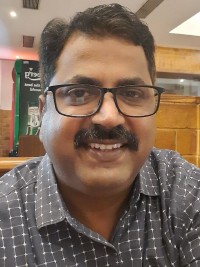| 1 |
Powder Diffractometer (PD3) |
Neutron Powder Diffractometer-PD-III, (Wavelenghts 1.48Å , 2.31Å), Temp. Range: 2K to 300K, Mag. Field: +/- 7 Tesla |
Powder sample ~ 3-4 grams (~ 1 cc volume), or Pellets of 6mm diameter - no such that total height 3- 4 cm, metallic sample (chunks < 6mm in any direction) |
| 2 |
Powder X-ray Diffractometer (D2 Phaser) |
Powder X-ray diffractometer for solids (powder) samples. |
Well grounded powder ( ~ 100 mg). Kindly NOTE that we cannot return the samples by POST. |
| 3 |
High Energy Planetary Ball Mill |
Dual jar. Maximum disk speed of 1300 rpm. Choice of jars/ balls are: WC, ZrO2, Agate |
5 - 10 grams |
| 4 |
Mini Arc Melter |
For preparing alloys and intermetallic samples |
~ 5 - 10 grams |
| 5 |
Advanced Neutron Imaging Beamline at Dhruva Reactor |
Neutron imaging is a powerful tool for non-destructive testing of materials and finds numerous applications in industry and in material research as well. Unlike X-rays, neutrons are attenuated more by low Z materials and can be especially used to image low Z materials (like hydrogen) inside high Z materials (like lead or iron). |
Please discuss with Scientist in Charge of the facility Dr. Yogesh Kashyap (yskashyap@barc.gov.in) |
| 6 |
Spark Plasma Sintering (SPS) |
Temperature up to 2200 deg C with pressing force range 5-50 kN |
Powder sample |
| 7 |
Broadband Dieclectric Spectrometer |
|
|


